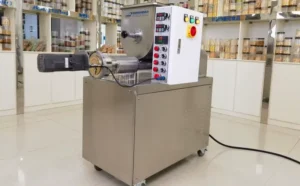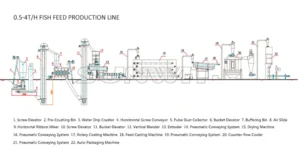When you bite into a kettle chip, there’s no mistaking that extra crunch and satisfying texture. But what exactly makes these chips different from regular potato chips? And are kettle cooked chips actually better for you? Let’s break it all down — from how kettle chips are made, to why they continue to win over snack lovers around the world.
What Are Kettle Chips?
Kettle chips, also known as kettle cooked potato chips, are a type of potato chip made using the batch frying method. Unlike regular chips, which are fried in a continuous process, kettle chips are cooked in small batches in hot oil, giving them a more rustic and artisan feel.
Unlike their mass-produced counterparts, kettle cooked chips tend to have a heartier crunch, irregular shape, and golden, rustic appearance. The term “kettle cooked” originates from the traditional iron kettles once used for small-batch frying.
How Are Kettle Chips Made?
The secret to kettle chips lies in the batch cooking process.
First, potatoes are sliced thicker than regular chips.
These slices are not rinsed, so the surface starch remains — this helps develop the signature golden-brown color and crispiness.
The slices are then added to a kettle or fryer filled with hot oil.
The frying is done in batches, with careful temperature control.
The chips are stirred during cooking, then drained and seasoned.
This process results in a chip that’s thicker, crunchier, and more flavorful.

Kettle Chips vs. Regular Potato Chips
| Feature | Kettle Chips | Regular Chips |
|---|---|---|
| Cooking Method | Batch frying | Continuous frying |
| Texture | Thicker, crunchier | Thin, uniform |
| Appearance | More irregular, golden | Smooth, lighter |
| Oil Exposure | Longer time in oil | Shorter frying time |
| Consumer Perception | Artisan, premium | Mainstream, mass-produced |
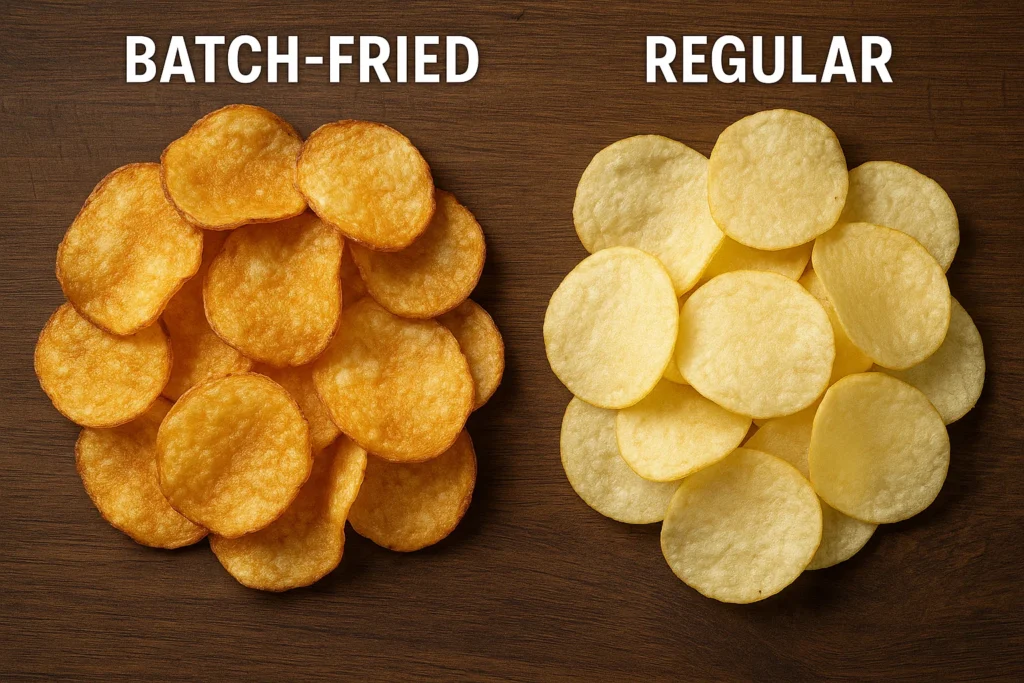
Are Kettle Chips Healthier?
A common question is: Are kettle chips better for you than regular chips?
While kettle cooked chips may appear more “natural” or artisanal, nutritionally they are not necessarily healthier. In fact:
Kettle chips often contain more fat and calories per serving due to longer oil exposure.
However, they may have fewer additives or preservatives depending on the brand.
Some varieties use non-GMO potatoes or natural oils, appealing to health-conscious consumers.
Popular Kettle Chip Flavors and Brands
Some of the most popular kettle chip flavors include:
Sea Salt & Vinegar
Jalapeño Kettle Chips
New York Cheddar
Maple Bacon
Barbecue
Brands like Kettle Brand, Lay’s Kettle Cooked, and Miss Vickie’s are leaders in the kettle chip space.
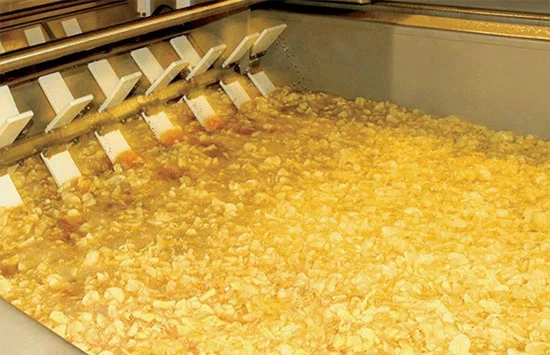
Can You Make Kettle Chips at Home?
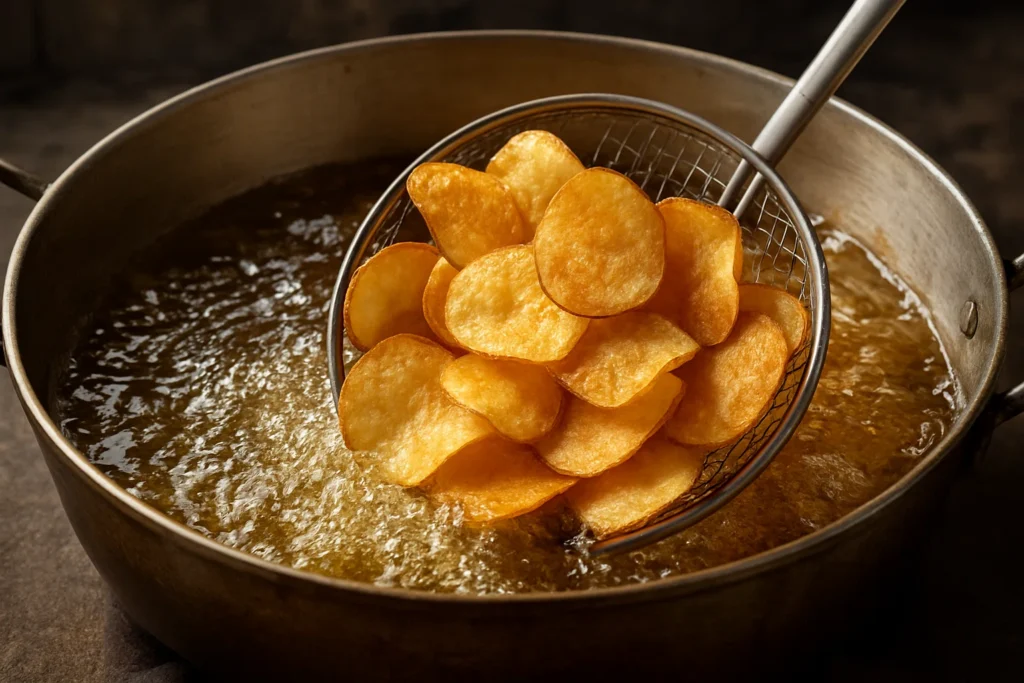
Yes! You can make kettle-style chips in your own kitchen with just a few tools:
Slice potatoes thicker than usual.
Heat a pot of oil (around 325°F / 160°C).
Fry in small batches, stirring regularly.
Drain and season.
Why Do People Love Kettle Chips?
The popularity of kettle cooked chips comes down to several key reasons:
Flavor: More intense, satisfying, and seasoned.
Crunch: Thicker and crisper than regular chips.
Perception: Feels more “authentic,” less industrial.
Variety: Endless flavors from spicy jalapeño to sweet honey dijon.
For Snack Food Manufacturers: Consider Batch Frying Equipment
If you are a food business or manufacturer looking to enter the premium snack market, investing in the right batch frying equipment is critical.
Zhuoheng’s Fried Snack Food Production Line offers a compact, efficient solution for batch-cooked snacks. Whether you produce potato chips, puffed snacks, or coated nuts — our frying technology ensures a consistent golden crunch and extended shelf life.
Explore our professional equipment here: https://zhuohengextruder.com/food-extruder-line/
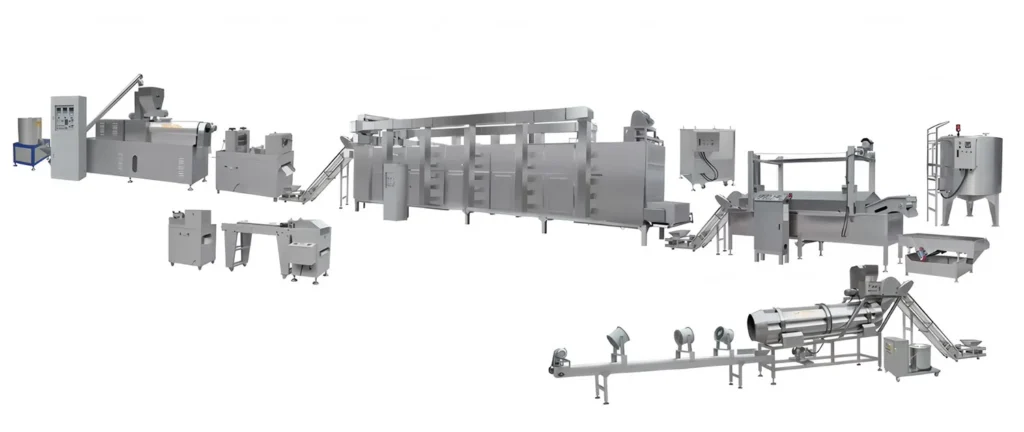
Recommended Food Processing Equipment for Snack Manufacturers
While kettle chips rely mainly on batch frying, many snack and convenience-food producers also create a variety of puffed or extruded products. If your business is considering expanding into a broader range of snack items, the following industrial production lines can help you scale efficiently and maintain consistent quality.
Puffed Food Production Line
Perfect for manufacturers already producing kettle chips, this line allows you to diversify into crispy, airy snacks such as corn sticks, cheese balls, and rice crackers. It uses modern extrusion technology combined with frying or baking to deliver a stable, high-capacity output.
Breakfast Cereal & Corn Flakes Food Production Line
Designed for continuous production, this system integrates mixing, extrusion, flaking, drying, and flavoring. It’s ideal for businesses targeting both snack and breakfast cereal markets and looking for reliable, high-volume performance.
Bread Crumbs Production Line
Bread crumbs play an essential role in fried foods—from chicken and shrimp to coated snacks. This production line enables processors to supply uniform, high-quality breadcrumbs using an efficient extrusion process, making it highly valuable for both food manufacturers and foodservice suppliers.
Pasta Macaroni Production Line
For manufacturers expanding into non-snack extruded foods, this line provides stable production of macaroni, pasta tubes, shells, and other shapes. While not directly tied to kettle chips, it’s a practical addition for facilities already equipped with extrusion technology.
Expanding Beyond Fried Snacks
For manufacturers looking to broaden their product categories—whether into puffed snacks, breakfast cereals, plant-based proteins, or pet food—the most essential piece of equipment is a modern extrusion system. You can explore our full range of extrusion solutions on the food extruder cornerstone page, where all major production lines and applications are covered in detail.
FAQs About Kettle Chips
What does kettle cooked mean?
A: It refers to a traditional batch-frying process that results in thicker, crunchier chips.
Are kettle cooked chips healthier than regular chips?
A: Not necessarily. They may have more fat due to longer cooking, but fewer additives.
Is kettle cooked the same as deep-fried?
Yes, both involve immersion in oil, but kettle cooking is slower and in batches.
What makes kettle chips crunchier than regular chips?
Kettle chips are cooked in small batches, allowing the potato slices to stay in the oil longer and cook unevenly. This creates thicker, more rigid surfaces, which gives kettle chips their signature deep crunch.
Are kettle cooked chips healthier than baked chips?
No. Baked chips generally contain less oil and fewer calories. Kettle chips, although often marketed as “natural,” still absorb more oil due to the batch frying process, making them higher in fat.
Do kettle chips use different potatoes?
Most kettle chips use the same potato varieties as regular chips, but premium brands sometimes choose potatoes with slightly higher starch content because starch contributes to browning and crispiness.
Why are kettle chips more expensive?
Batch frying is slower and less efficient than continuous frying. Each batch requires more time, labor, and energy. Additionally, many kettle chip brands position themselves as “premium,” which affects pricing.
What oil is used to make kettle chips?
Manufacturers commonly use vegetable oil, sunflower oil, or peanut oil. Some brands use non-GMO or expeller-pressed oils to appeal to health-conscious consumers.
Are kettle cooked chips gluten-free?
Yes, plain kettle chips made from potatoes, oil, and salt are naturally gluten-free. However, flavored varieties may contain gluten due to seasoning additives, so it’s important to check the label.
Why do some kettle chips look darker?
Darker chips result from natural potato sugars caramelizing during longer fry times. The batch-frying method, which doesn’t rinse off potato starch, also contributes to the variation in color.
Can kettle chips be made with an air fryer?
An air fryer can mimic kettle-style crispiness, but the results won’t be identical. Air fryers use hot air rather than oil immersion, so the texture tends to be lighter and less rigid.
Why do kettle chips have more “folded” or curled pieces?
Batch frying allows slices to move freely and fold naturally during cooking. These folds trap heat and oil, which produces extra-crispy “bubble chips” that many snack lovers enjoy.
How long do kettle chips stay fresh after opening?
Typically 3–5 days. Because kettle chips are thicker and contain slightly more oil, they maintain texture longer than thin chips—but must still be kept sealed tightly to reduce moisture absorption.

